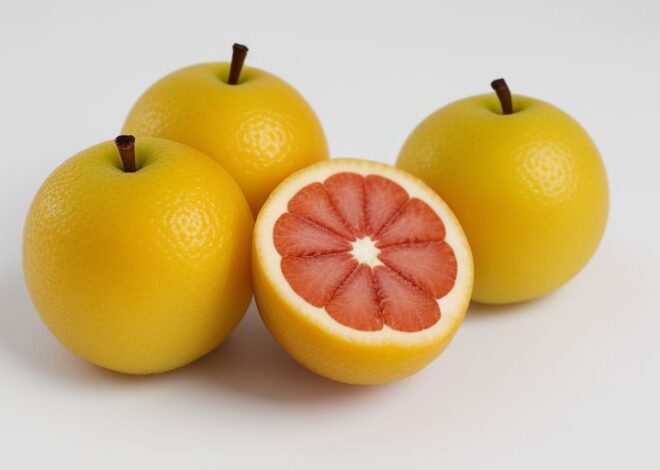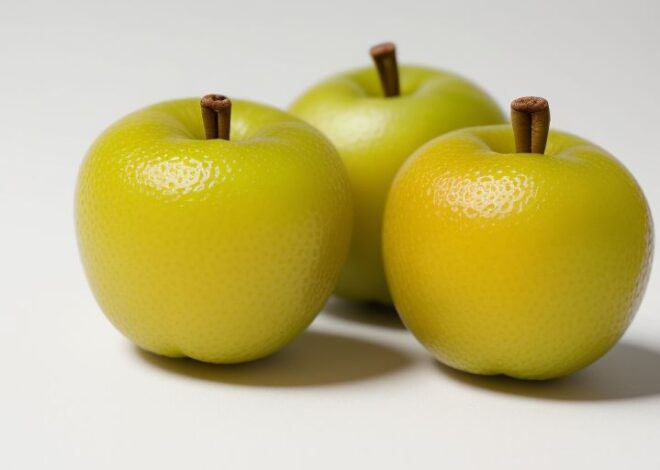
Clementine
Introduction
Clementine (Citrus clementina) is a hybrid citrus fruit, a cross between a mandarin and a sweet orange. It is a popular citrus fruit known for its seedless, easy-to-peel, and sweet characteristics. Clementines are widely cultivated in many parts of the world, particularly in the Mediterranean region, and are often eaten fresh or used in various culinary applications.
Etymology
The name “clementine” is derived from the French name “Clémentine”, which was given to the fruit by Father Clément Rodier, a French missionary in Algeria, who discovered the hybrid in the 19th century. The fruit was named after Rodier, who cross-bred a mandarin with a sweet orange to create the seedless and sweet clementine.
Description
Clementines are small to medium-sized citrus fruits, typically around 5-6 cm in diameter. They have a smooth, glossy, and thin skin, which is usually a deep orange color. The flesh is juicy, sweet, and seedless, with a flavor that is a combination of mandarin and orange. The segments are easy to peel and separate, making them a popular choice for snacking and salads.
Taxonomy and Cultivars
Clementines belong to the Rutaceae family and are classified as a hybrid of Citrus reticulata (mandarin) and Citrus sinensis (sweet orange). There are several cultivars of clementines, including:
| Cultivar | Characteristics |
|---|---|
| Clemenules | Small to medium size, seedless, and sweet |
| Nadorcott | Large size, seedless, and sweet |
| Oroval | Medium size, seedless, and sweet |
| Monreale | Small size, seedless, and sweet |
Distribution and Habitat
Clementines are widely cultivated in many parts of the world, particularly in the Mediterranean region, including Spain, Italy, Greece, and North Africa. They prefer a subtropical climate with mild winters and hot summers, and are often grown in orchards with well-drained soil and full sun.
Cultivation
Clementines are propagated through cuttings or grafting, and are usually grown on a rootstock of sour orange or lemon. The trees are pruned regularly to maintain a bushy shape and promote fruiting. Clementines are relatively low-maintenance and can tolerate some frost, but are sensitive to extreme temperatures and humidity.
Production and Uses
Clementines are widely cultivated for their fresh fruit, which is often eaten as a snack or used in salads, desserts, and juices. They are also used in the production of jam, marmalade, and essential oils. According to the Food and Agriculture Organization (FAO), global production of clementines was over 3 million tons in 2020, with Spain being the largest producer.
Phytochemistry
Clementines contain a range of bioactive compounds, including flavonoids, carotenoids, and limonoids, which have been shown to have antioxidant and anti-inflammatory properties. The essential oil of clementines is rich in limonene, which has been used in aromatherapy and has antimicrobial properties.
Flavor
Clementines are known for their sweet and juicy flavor, which is a combination of mandarin and orange. The flavor is often described as sweet and tart, with a hint of bitterness.
Toxicity
Clementines are generally considered safe to eat, but may cause allergic reactions in some individuals. The essential oil of clementines can be toxic if ingested in large quantities.
Nutrition
Clementines are a good source of vitamin C, potassium, and fiber, and are low in calories. They also contain a range of phytochemicals, including flavonoids and carotenoids, which have been shown to have antioxidant and anti-inflammatory properties.
Culture
Clementines have a rich cultural heritage, particularly in the Mediterranean region, where they are often eaten as a snack or used in traditional dishes. In Spain, clementines are a popular ingredient in Christmas desserts, while in Italy, they are often used in salads and as a garnish for cocktails.
Quotes
- “Clementines are like little bursts of sunshine in your mouth.” – Unknown
- “The clementine is a fruit that is both elegant and rustic, a true delight of the senses.” – French chef, Jacques Pépin
Tables
| Nutrient | Amount (per 100g) |
|---|---|
| Vitamin C | 36.2 mg |
| Potassium | 177 mg |
| Fiber | 2.3 g |
| Calories | 47 kcal |
| Phytochemical | Amount (per 100g) |
|---|---|
| Flavonoids | 15.6 mg |
| Carotenoids |
| Phytochemical | Amount (per 100g) |
|---|---|
| Flavonoids | 15.6 mg |
| Carotenoids | 2.1 mg |
| Limonoids | 1.8 mg |
Conclusion
Clementines are a delicious and nutritious citrus fruit, known for their seedless, easy-to-peel, and sweet characteristics. They are widely cultivated in many parts of the world and are a popular ingredient in many culinary applications. Clementines are a good source of vitamin C, potassium, and fiber, and contain a range of phytochemicals with antioxidant and anti-inflammatory properties. Whether eaten fresh, used in cooking, or enjoyed as a juice, clementines are a true delight of the senses.
References
- Rodier, C. (1895). Le clémentinier, un nouveau genre de citronnier. Revue de l’Horticulture, 67, 233-236.
- FAO (2020). Production of clementines. Food and Agriculture Organization of the United Nations.
- USDA (2020). Clementine nutrition facts. United States Department of Agriculture.


